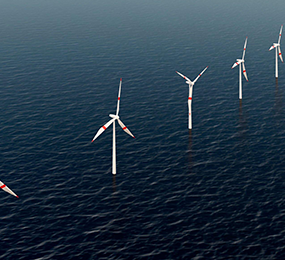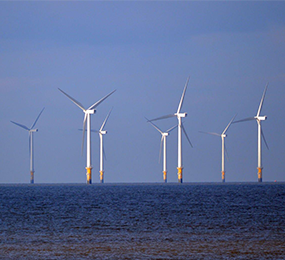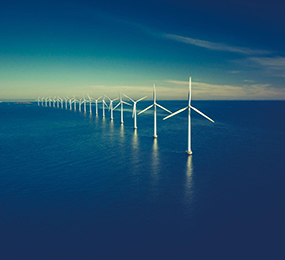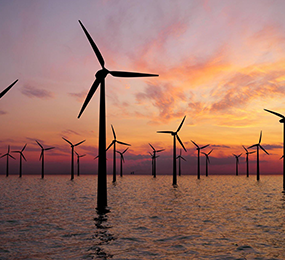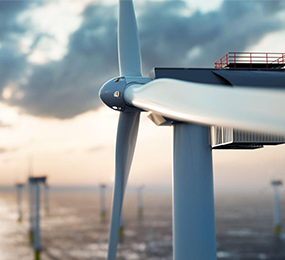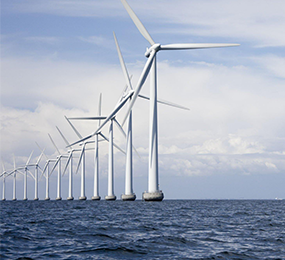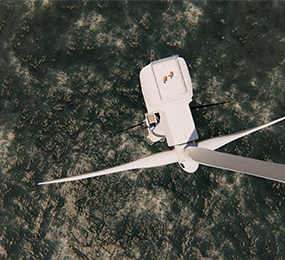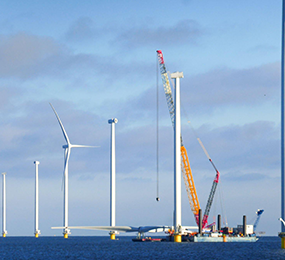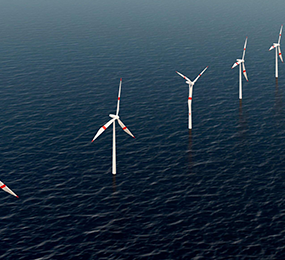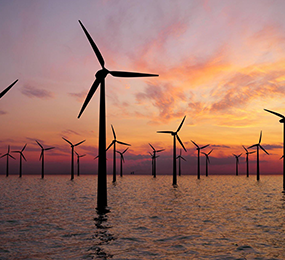Floating Offshore Wind and the Fishing Industry: The Path to Co-Existence
Biodiversity preservation
Fish and other marine species that dwell in and around wind farms – and on which fisherman rely for a living – can coexist with offshore wind farms, owing in part to the experience of various team of environmental professionals.
Carefully minimize environmental impacts during construction, for example, by employing bubble curtains, noise mitigation screens, hydro sound dampers, and suction bucket jackets to reduce noise. Once developed, turbine foundations serve as artificial reef habitats for new and varied species.
Actively monitor and minimize any potential impacts on the fishing environment, particularly on economically significant species and ecosystems, throughout the life of a wind farm. This has included pioneering study into crustacean stocks on one of wind farms. Offshore wind operations had no harmful influence, according to this study.
Navigational safety
The wind turbines in an offshore wind farm are widely dispersed, which may not be noticeable from a distance. The wind turbines are illuminated and labelled in compliance with applicable legislation and local instructions, and their location is appropriately depicted on nautical charts.
Collaboration with fishing industries
When the ocean is a source of revenue or a recreational fishing spot, the presence of an offshore wind farm might be reason for anxiety.
Understanding the cultural and economic significance of fishing areas is critical. Working collaboratively with commercial and recreational fishing communities is critical throughout the development, construction, and operation of offshore wind farms.
Offshore wind farm conflicts with commercial fishing
1. Inadvertent damage, including to subsea cables. Accidental damage and ship collisions are big concerns. Snagging fishing gear can also cause a vessel to flip over or capsize, posing a major risk to fishermen.
2. Species extinction. Offshore wind farm construction and operation can disrupt mobile and sessile species, resulting in displacement or decrease of fish and shellfish supplies.
3. The environmental repercussions of geographical exclusion. Even if it is voluntary in terms of risk aversion, spatial exclusion might result in reduced or lost access to traditional fishing areas. This, in turn, causes activity to shift to other (perhaps less profitable and/or less dependable) fishing locations, increasing fishing pressure there.
4. Economic ramifications of geographical isolation. Improving navigation routes to and from fishing sites can result in longer steaming times. Small-scale fisheries may be unable to compensate for rising operating costs, and certain fishing areas may become inaccessible to small boats entirely. However, there are greater initial expenses for developers if they must agree on coexistence with the fisheries as a condition of gaining their license.
5. Socio-cultural problems. Conflicts between offshore wind farms and fishing can sometimes mask a deeper conflict. Offshore wind farms may be perceived by fishermen as the latest in a long line of limitations, endangering not just livelihoods but also a traditional way of life.
The 3rd Annual Floating Wind Europe is a one-day Hybrid event that will offer the ideal opportunities for networking, interaction and one-on-one meetings.
To register or learn more about the Forum please check here: https://bit.ly/3U9kPZ9
For more information and group participation, contact us: [email protected]
Leadvent Group - Industry Leading Events for Business Leaders!


